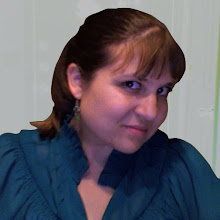From Martha's feedback (and reaction) I can see the the whole shifting/sliding/filmstrip notion won't work. Which is fine. I think the solutions she and I talked about (making the left-hand space a history line, and the right-hand space a place for saved material) will work well. Or, at least, will be good things to explore.
I think what's working now is the pared down aesthetic. I might play with this a bit more, but I like the grays, the stillness to it all. Maybe a texture for that background gray would be nice.
I like keeping the type large and simple, with just some basic typographic weight/style changes, and one (maybe two tops) color changes for emphasis. I think using the center panel for main content is good, and the surrounding real estate needs to be kept minimal, only allowing for pertinent material and maneuvering through the system. Everything about this system needs to be about isolation and leading someone by the hand.
The language is going to be very important as well. Exactly the way in which the questions are asked, and the way things are worded will be key. I need to establish a consistent tone for the wording (to match and enhance that of the visuals).
Some things Martha mentioned:
- Should the recommended queries be listed with the keywords?
- When you need to come back to the system, how would that work? Could there be a search mode and a saved mode?
- You need to think about the emotional components for this. Especially since I'm looking at decision making and such. My personas and scenarios are (as Martha said) "fraught" with emotion. How to account for that? Or exploit that?
From here, I think the next step will be to story-board how the rest of the system works/can be demonstrated. Then from there, I need to really scrutinize the story-board, and then produce the visuals.
Finally, I also need to be cognizant of the factor of time. My three personas are very busy people. A system that slows you down to really help you move through information in such a methodical way can, in the end, be a time saver—but the time investment up front may feel like too much. So the challenge will be to balance that, to move through these initial steps quickly, and to make the history and saved material functions really useful and intuitive.


